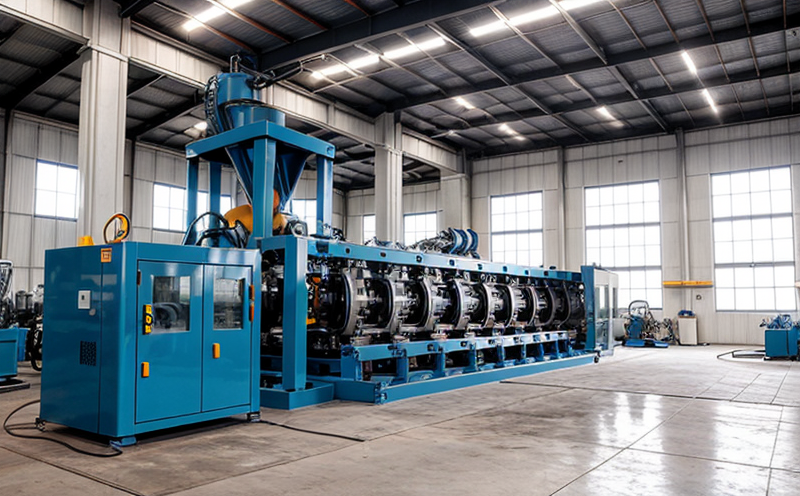ISO 7919 Shaft Vibration Performance Testing
The ISO 7919 standard provides a framework for assessing shaft vibration in rotating machinery. This service is critical for ensuring the reliability and performance of machinery, particularly those with significant rotational components such as turbines, pumps, and motors. Compliance with this standard helps manufacturers and quality assurance teams identify potential issues early in the product lifecycle, thereby minimizing downtime and maintenance costs.
The testing process involves several key steps that are tailored to the specific requirements set forth by ISO 7919. The first step is the selection of appropriate sensors for vibration measurement, typically accelerometers or velocity transducers. These devices must be calibrated according to international standards such as EN ISO 8041 and ASTM E263.
Once the equipment is selected, it needs to be installed in a manner that ensures accurate measurements are obtained without introducing additional noise into the system being tested. This can involve careful placement of sensors along predetermined points on the shaft, ensuring they do not interfere with normal operations or operational parameters such as speed and load.
The testing itself involves running the machinery at various speeds and loads to simulate real-world operating conditions. During these runs, data is collected continuously using high-resolution recording instruments capable of capturing minute changes in vibration levels across all relevant frequencies. This allows for detailed analysis later on when determining whether the machine meets acceptable limits defined by ISO 7919.
After completing multiple trials under different scenarios, the collected data undergoes rigorous statistical evaluation to ensure consistency and reliability. Any deviations from expected values may indicate underlying problems that need addressing before placing machines into production environments or allowing them back into service after repair.
To summarize, ISO 7919 shaft vibration performance testing is an essential tool for maintaining high standards of quality control within industrial manufacturing processes. By adhering closely to this internationally recognized standard, businesses can enhance their reputation as reliable suppliers while also protecting themselves against costly failures and recalls down the line.
- Ensures compliance with international standards
- Identifies potential issues early in the product lifecycle
- Reduces maintenance costs associated with unexpected downtime
- Enhances overall reliability of machinery and equipment
Scope and Methodology
The scope of ISO 7919 shaft vibration performance testing includes the evaluation of axial, radial, and transverse vibrations within rotating machinery. The methodology specifies how to measure these vibrations accurately using appropriate instrumentation and interpret the results correctly based on established criteria.
For instance, when measuring axial vibrations, it is crucial to place sensors at specific locations along the length of the shaft where significant displacements might occur due to misalignment or imbalance. Similarly, radial measurements should be taken around the circumference of the shaft at multiple points to capture any uneven distribution of forces acting upon it.
The methodology also dictates how often and under what conditions these measurements should be made throughout the test run. For example, continuous monitoring during startup and shutdown sequences can help identify transient phenomena that may not appear consistently when running steady-state operations.
Interpretation of the data collected involves comparing actual readings against predefined limits specified in ISO 7919. These thresholds take into account factors such as operating speed, load conditions, and environmental influences like temperature fluctuations or humidity levels. Compliance with these limits indicates that the machine operates safely within acceptable parameters.
Industry Applications
The application of ISO 7919 shaft vibration performance testing extends across various sectors where rotating machinery plays a crucial role in production processes. In power generation, for example, turbines are subjected to intense stress during operation which could lead to premature failure if not properly monitored.
In the oil and gas industry, compressors used for extracting crude oil or natural gas face harsh operating environments that require robust construction materials capable of enduring prolonged exposure without degradation. Regular vibration testing ensures these critical components maintain peak efficiency over extended periods.
Manufacturers producing large-scale industrial machinery like conveyors or milling equipment benefit greatly from this service as it helps them optimize design parameters for better performance and longer lifespan. Additionally, maintenance teams can use the insights gained through ISO 7919 testing to schedule preventive servicing more effectively thus extending asset life while reducing unplanned outages.





